DEFB4
-
Official Full Name
defensin beta 4 -
Overview
Defensins form a family of microbicidal and cytotoxic peptides made by neutrophils. Members of the defensin family are highly similar in protein sequence. This gene encodes defensin, beta 4, an antibiotic peptide which is locally regulated by inflammation. -
Synonyms
BD-2;SAP1;DEFB2;DEFB4;HBD-2;DEFB-2;DEFB102;beta-defensin 4A;defensin, beta 2;defensin, beta 4;OTTHUMP00000159651;skin-antimicrobial peptide 1
Recombinant Proteins
- Human
- Rat
- Mouse
- E.coli
- Mammalian Cells
- HEK293
- Non
- His
- Avi
- Fc
- SUMO
| Cat.# | Product name | Source (Host) | Species | Tag | Protein Length | Price |
|---|---|---|---|---|---|---|
| DEFB4-18H |
Active Recombinant Human DEFB4 protein
|
E.coli | Human | Non | ||
| DEFB4-1838R | Recombinant Rat DEFB4 Protein | Mammalian Cells | Rat | His |
|
|
| DEFB4-4486M | Recombinant Mouse DEFB4 Protein | Mammalian Cells | Mouse | His |
|
|
| Defb4-598R | Recombinant Rat Defb4 protein | E.coli | Rat | Non | 41 |
|
| DEFB4-1496R | Recombinant Rat DEFB4 Protein, His (Fc)-Avi-tagged | HEK293 | Rat | Avi&Fc&His |
|
|
| DEFB4-1496R-B | Recombinant Rat DEFB4 Protein Pre-coupled Magnetic Beads | HEK293 | Rat |
|
||
| DEFB4-1953M | Recombinant Mouse DEFB4 Protein (23-63 aa), His-SUMO-tagged | E.coli | Mouse | His&SUMO | 23-63 aa |
|
| DEFB4-2314M | Recombinant Mouse DEFB4 Protein, His (Fc)-Avi-tagged | HEK293 | Mouse | Avi&Fc&His |
|
|
| DEFB4-2314M-B | Recombinant Mouse DEFB4 Protein Pre-coupled Magnetic Beads | HEK293 | Mouse |
|
Background
What is DEFB4 protein?
DEFB4 (also known as DEFB104A, defensin beta 104A) gene is a protein coding gene which situated on the short arm of chromosome 8 at locus 8p23. Defensins form a family of antimicrobial and cytotoxic peptides made by neutrophils. Defensins are short, processed peptide molecules that are classified by structure into three groups: alpha-defensins, beta-defensins and theta-defensins. All beta-defensin genes are densely clustered in four to five syntenic chromosomal regions. The DEFB4 protein is consisted of 72 amino acids and its molecular mass is approximately 8.5 kDa.
What is the function of DEFB4 protein?
DEFB104A/DEFB4 protein (also known as beta-defensin) is a small molecular antimicrobial peptide that belongs to the beta-defensin family. It can play an antibacterial role by destroying the integrity of bacterial cell membranes, thereby killing or inhibiting the growth of a variety of gram-positive and Gram-negative bacteria. It also has antiviral activity, which can inhibit the replication and spread of some viruses. It can regulate the host immune system, induce the production of chemokines, and promote the migration and activation of immune cells.
DEFB4 Related Signaling Pathway
DEFB104A is mainly involved in the host's innate immune response. DEFB104A plays an antibacterial role by binding to specific receptors on a pathogen's cell membrane and destroying its cell membrane structure. In addition, DEFB104A is involved in the regulation of inflammatory responses by interacting with pattern recognition receptors (such as toll-like receptors) and activating downstream signaling pathways such as NF-κB and MAPK pathways, which in turn regulate the production of pro-inflammatory factors and chemokines.
DEFB4 Related Diseases
DEFB104A protein has antimicrobial activity, can affect the function of the human immune system, and is associated with a variety of diseases. Several studies have linked DEFB104A protein to inflammatory diseases (e.g., inflammatory bowel disease, rheumatoid arthritis), skin diseases (e.g., psoriasis), and cancer (e.g., breast cancer, colon cancer).
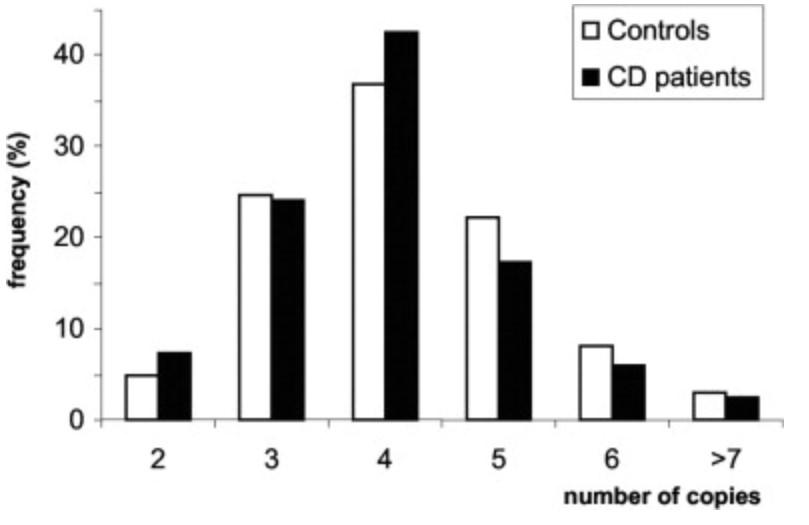
Fig1. Frequency distribution of beta-defensin cluster copy numbers in Celiac disease (CD) patients and controls. (Nora Fernandez-Jimenez, 2010)
Bioapplications of DEFB4
In the field of skin science and biomedicine, the applications of DEFB104A protein are mainly concentrated in the following aspects: First, due to its important role in maintaining skin barrier function, DEFB104A protein can be used as a target for the development of new skin protection and repair products; Second, given its role in immune and inflammatory responses, DEFB104A protein may be used to treat skin inflammatory diseases such as eczema and psoriasis; In addition, DEFB104A protein may also be used as a biomarker to diagnose and monitor the progression of certain skin diseases.
Case Study
Case study 1: Sabine Nuding, 2013
Although antimicrobial peptides protect mucus and mucosa from bacteria, Helicobacter pylori is able to colonize the gastric mucus. To clarify in which extend Helicobacter escapes the antimicrobial defense, the researchers systematically assessed susceptibility and expression levels of different antimicrobial host factors in gastric mucosa with and without H. pylori infection.
They investigated the expression levels of HBD4 (DEFB104A) by real time PCR in gastric biopsy samples in a total of 20 controls versus 12 patients colonized with H. pylori. Immunostaining was performed for HBD2 and HBD3. They assessed antimicrobial susceptibility by flow cytometry, growth on blood agar, radial diffusion assay and electron microscopy. HBD4 was not expressed in significant levels in gastric mucosa. H. pylori strains were resistant to the defensins HBD1 as well as to elafin, and strain specific minimally susceptible to HBD2, whereas HBD3 and LL37 killed all H. pylori strains effectively. Comparing the antibacterial activity of extracts from H. pylori negative and positive biopsies, they found only a minimal killing against H. pylori that was not increased by the induction of HBD2 in H. pylori positive samples.
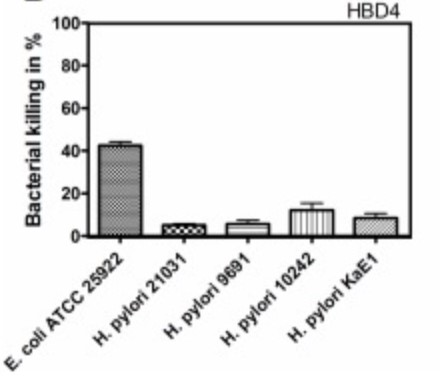
Fig1. Sensitivity of various H. pylori strains to HBD4
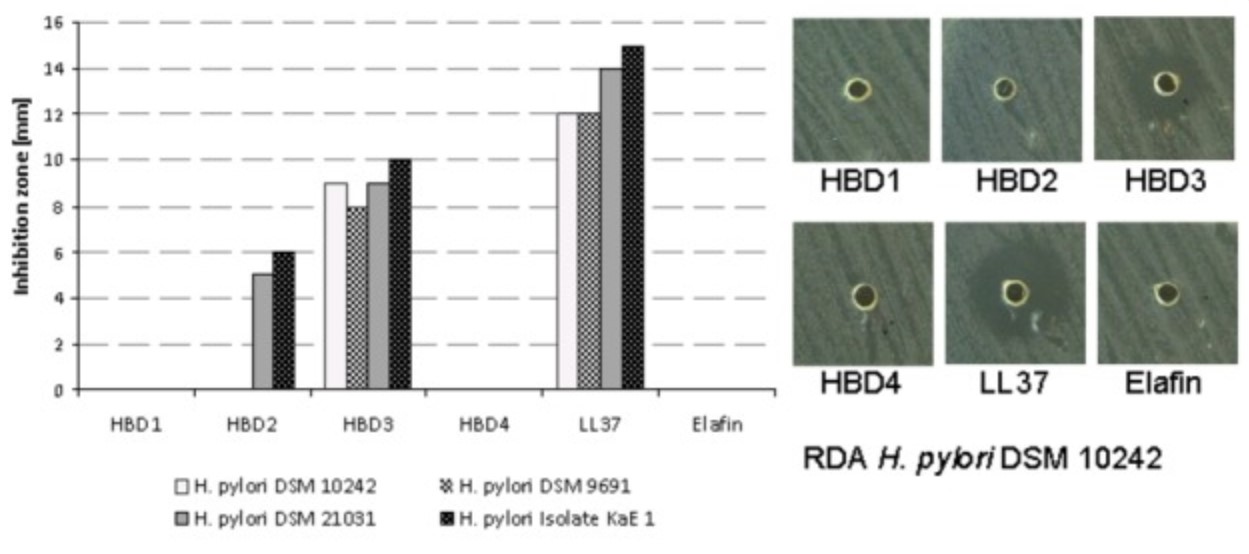
Quality Guarantee
High Purity
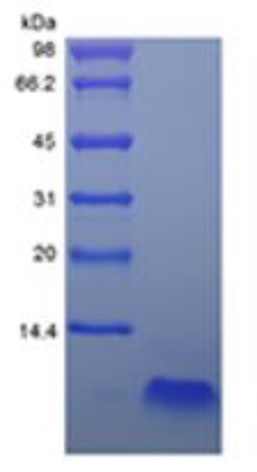
Fig1. SDS-PAGE (DEFB4-18H) (PROTOCOL for western blot)
.
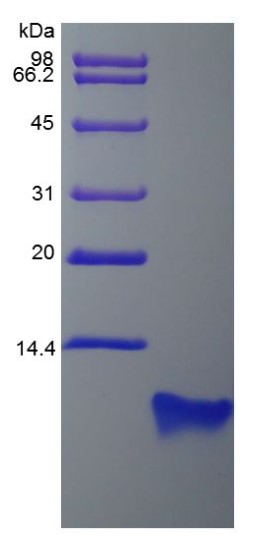
Fig2. SDS-PAGE (Defb4-598R) (PROTOCOL for western blot)
Involved Pathway
DEFB4 involved in several pathways and played different roles in them. We selected most pathways DEFB4 participated on our site, such as , which may be useful for your reference. Also, other proteins which involved in the same pathway with DEFB4 were listed below. Creative BioMart supplied nearly all the proteins listed, you can search them on our site.
| Pathway Name | Pathway Related Protein |
|---|
Protein Function
DEFB4 has several biochemical functions, for example, . Some of the functions are cooperated with other proteins, some of the functions could acted by DEFB4 itself. We selected most functions DEFB4 had, and list some proteins which have the same functions with DEFB4. You can find most of the proteins on our site.
| Function | Related Protein |
|---|
Interacting Protein
DEFB4 has direct interactions with proteins and molecules. Those interactions were detected by several methods such as yeast two hybrid, co-IP, pull-down and so on. We selected proteins and molecules interacted with DEFB4 here. Most of them are supplied by our site. Hope this information will be useful for your research of DEFB4.
Resources
Related Services
Related Products
References



